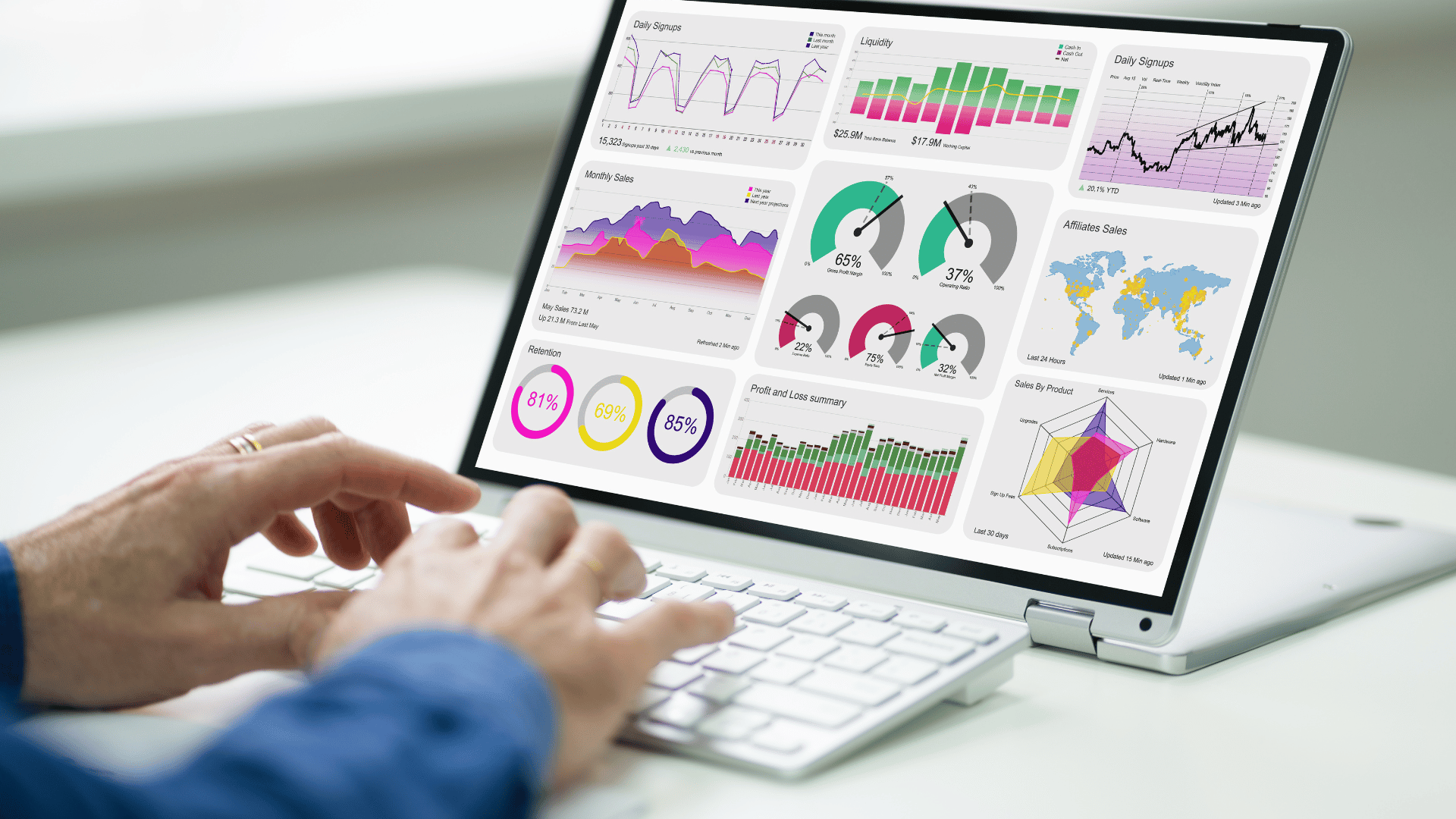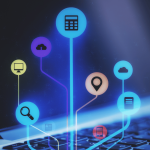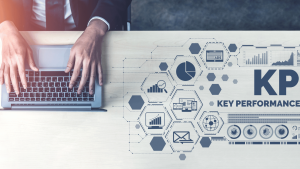Key takeaway:
- Cloud Attendance Management provides a definition and importance of analytics and reporting in attendance management.
- Cloud Attendance Analytics offers benefits such as real-time attendance insights and data-driven attendance management.
- Workforce Optimization Analytics enables the use of predictive attendance analytics and performance analysis reporting.
In the world of Attendance Management, Analytics and Reporting play a crucial role. Dive into this fascinating realm as we explore the Definition of Cloud Attendance Management and why Analytics and Reporting are of paramount importance in this field. Uncover the hidden insights, trends, and data-driven strategies that are revolutionizing the way organizations manage attendance. Get ready to unravel the power of analytics and reporting in optimizing workforce productivity and enhancing decision-making processes.
Importance of Analytics and Reporting in Attendance Management
Analytics and reporting are essential for attendance management. They offer meaningful information and support data-driven decisions. Cloud-based attendance analytics allow businesses to comprehend their employee’s attendance behaviour, trends, and performance.
Cloud attendance analytics enable HR professionals and managers to discover areas that need improvement, optimize resource usage, and boost workforce productivity. This is necessary in the current business landscape.
Cloud attendance analytics include real-time attendance insights. This facilitates quick intervention in case of any problems. Organizations can check attendance data on a regular basis to guarantee following regulations and company policies. This feature makes attendance management more effective.
Advanced analytics capabilities also have predictive attendance analytics. By looking at past data, organizations can predict potential tardiness or absenteeism trends. This proactive technique allows them to resolve issues before they cause a major impact on productivity.
Performance analysis reporting is another valuable feature offered by cloud attendance analytics. By merging attendance data with performance metrics, businesses can assess the correlation between employee absence and productivity levels. This investigation assists in finding out parts where employee absences may be disturbing general performance. Action can then be taken to reduce these effects and enhance productivity.
Besides compliance monitoring and workforce optimization advantages, customizable attendance analytics give organizations the opportunity to modify reports in line with their individual needs. They can create custom metrics and key performance indicators (KPIs) that are relevant to their distinct business requirements. This flexibility guarantees that the analytics are in line with the organization’s objectives while supplying useful insights for smart decision-making.
In conclusion, analytics and reporting in cloud-based attendance management are very important. Data-driven insights let organizations optimize resource usage and find cost-saving options. They also ensure regulatory compliance and policy observance. By employing cloud attendance analytics, organizations can stay ahead of the competition and make informed decisions for improved productivity and success.
Overview of Cloud Attendance Analytics
Discover the power of cloud attendance analytics – uncovering valuable insights and unlocking productivity potentials. Delve into the benefits of harnessing cloud attendance analytics, providing data-driven decision making and improving workforce management. Understand the key features that make cloud attendance analytics essential for businesses, ensuring real-time tracking, accurate reporting, and seamless integration.
Join us as we explore the transformative advantages of this innovative technology.
Benefits of Cloud Attendance Analytics
Cloud Attendance Analytics unlocks the secrets of your workforce. It offers numerous benefits, such as improved decision-making, enhanced compliance management, and informed cost analysis. This cloud-based system enables real-time analytics, helping organizations identify trends, patterns, and anomalies. It also allows them to ensure regulatory and legal compliance, reduce expenses, and optimize resource allocation.
Furthermore, Cloud Attendance Analytics provides customizable reporting capabilities. This empowers users to create custom metrics and KPIs that align with their organizational goals. This ensures the analytics generated are relevant and actionable for the organization.
Cloud Attendance Analytics is becoming an essential tool for modern-day organizations. It will continue to evolve with advancements in technology and provide a competitive edge in managing their workforce effectively.
Key Features of Cloud Attendance Analytics
Cloud attendance analytics feature a range of advantages that enhance staff attendance management. These include:
- Real-time Data Analysis – allowing organizations to watch attendance patterns and trends in an instant.
- Customizable Reporting – with the flexibility to include relevant metrics and KPIs for tracking attendance.
- Predictive Analytics – using modeling techniques to forecast future attendance.
- Integration Capabilities – seamlessly integrating with other HR systems, like payroll and scheduling.
- Data Visualization – presenting attendance data in visually appealing ways to make it easier for stakeholders to understand.
These features greatly benefit attendance management. They provide real-time insight, customizable reporting, predictive capabilities, system integration, and visual data.
Organizations can use these features to gain valuable insights into attendance patterns, track policy compliance, optimize resources, and increase productivity. With tailored reports and metrics, cloud-based solutions offer enhanced accuracy in attendance management.
Cloud technology is becoming more common in business operations. So, the future of cloud attendance management is looking positive. The integration of analytics and reporting in cloud-based attendance systems will empower HR departments and drive workforce optimization. Analytics can be used to improve productivity, ensure compliance, and optimize resource allocation.
Advanced Attendance Reporting
Get ready to take attendance reporting to the next level with our Advanced Attendance Reporting section. Discover how Real-time Attendance Insights and Data-driven Attendance Management can revolutionize the way you track and analyze attendance data. Say goodbye to manual reporting and hello to a more efficient and data-backed approach. Uncover valuable insights and optimize your attendance management processes with the power of analytics in the cloud.
Real-time Attendance Insights
A table can be created to show Real-time Attendance Insights. It has columns for employee names, status of attendance (present/absent) and time of arrival/departure. Extra details like notes and comments about attendance can also be included.
| Employee Names | Status of Attendance | Time of Arrival/Departure | Notes/Comments |
|---|
Real-time Attendance Insights give a snapshot of employee attendance. Managers can spot trends, like frequent absences or late arrivals. This helps them take action quickly and follow attendance policies. Plus, the data allows optimization of resources in real-time.
Don’t worry – we’ll crunch the numbers for you, making attendance management easy.
Data-driven Attendance Management
Data-driven Attendance Management is more than manual tracking. It uses advanced tech and data analytics tools to give organizations powerful insights.
Benefits include:
| – Real-time Attendance Insights: | Seeing attendance patterns and trends directly. |
| – Data-driven Decision Making: | Using data to steer attendance-related decisions. |
| – Predictive Analytics: | Using algorithms and models to forecast future attendance. |
Organizations gain prompt visibility of attendance issues, such as lateness or absenteeism. Plus, predictive analytics helps anticipate fluctuations in attendance, allowing more effective resource and schedule planning.
Workforce Optimization Analytics
Discover the true power of workforce optimization analytics in cloud attendance management. Unleash the potential of predictive attendance analytics and performance analysis reporting to enhance your organization’s productivity and efficiency. Harness data-driven insights to streamline scheduling, identify patterns, and make informed business decisions. Dive into the world of advanced analytics and reporting, backed by reliable sources, to transform your workforce management strategies.
Predictive Attendance Analytics
Predictive Attendance Analytics offer huge advantages. Organizations can predict staffing needs, and make sure there is enough coverage during key periods. This minimizes disturbance and keeps productivity high. The analytics can also spot absenteeism and tardiness, so managers can step in and help.
To do this, organizations need access to good data and advanced analytics tools. Real-time attendance info is vital for accurate predictions – it shows who is present and available.
Advanced analytics let organizations get valuable insights from attendance data. This helps them understand workforce optimization strategies, identify areas that need improvement, and analyze the impact of policies on attendance rates.
Unlock the mysteries of attendance with performance analysis reporting – the attendance detective you never knew you needed.
Performance Analysis Reporting
Performance Analysis Reporting is a must-have for organizations to track and analyze employee attendance and performance trends. It can be used to evaluate individual performance, discover patterns affecting productivity, and map attendance to business goals. Additionally, it aids in improving employee engagement by providing visibility into their own records.
This tool also provides unique features such as real-time monitoring, customizable reports, and custom KPIs tailored to attendance management. As data-driven decision making is becoming increasingly important, Performance Analysis Reporting has great value for HR professionals and business leaders. It optimizes workforce management and contributes to organizational growth by enabling businesses to make decisions based on accurate attendance data analysis.
Compliance Reporting and Analytics
Compliance reporting and analytics in cloud attendance management enable businesses to ensure regulatory and legal compliance while monitoring attendance policy adherence. This helps organizations avoid penalties, optimize operations, and maintain a productive and compliant workforce.
Ensuring Regulatory and Legal Compliance
Cloud attendance analytics offer essential features for regulatory and legal compliance. Real-time insights help organizations identify any violations or discrepancies quickly. Data-driven attendance management keeps records accurate and in line with government regulations. Reports can be used as evidence if there are audits or disputes.
| Customizable analytics | Meaning |
|---|---|
| Organizations can tailor reports for specific regulatory needs | They also create custom metrics and KPIs to monitor attendance policies and regulations better. |
Cloud attendance analytics are vital for compliance; they ensure organizations maintain accurate records and adhere to labor laws. As data privacy’s importance grows, cloud attendance analytics become even more crucial for organizations to ensure compliance in attendance management.
Monitoring Attendance Policy Adherence
Unlock the secrets of attendance costs with cloud-based systems! Real-time tracking ensures organizations can monitor attendance promptly. Analyzing patterns helps identify any non-compliance to attendance policies. Alerts & notifications can be generated when policies are not followed. And finally, comprehensive reporting & documentation is essential for HR purposes and performance evaluations.
Through effective monitoring, organizations can keep their workforce operations in check and stay compliant with regulations. Decipher the details of attendance costs, one decimal place at a time!
Cost Analysis for Attendance
When analyzing the cost of attendance management in the cloud, it is crucial to identify potential cost-saving opportunities and optimize resource allocation. By doing so, organizations can make informed decisions that lead to more efficient and cost-effective attendance systems.
The data shows that with proper analysis, organizations can reduce overhead costs by a significant percentage and allocate resources more effectively for maximum productivity.
So, let’s dive into the cost analysis for attendance and discover how to make the most of this vital aspect of cloud-based management.
Identifying Cost-saving Opportunities
Real-time Analytics aid organizations in quickly detecting patterns and trends that may cause costly expenses. Through analyzing attendance data, resource allocation optimization is achievable, thus reducing extra costs.
Attendance analytics also provide insights into employee performance, enabling organizations to improve productivity and reduce costs associated with underperforming staff.
By monitoring adherence to attendance policy, organizations can prevent expensive penalties and legal consequences.
Cloud attendance analytics solutions offer customizable reports, helping organizations generate reports suiting their needs and pinpointing potential cost-saving opportunities.
Predictive analytics further help companies forecast attendance patterns and make proactive decisions to decrease costs associated with overtime or understaffing.
Identifying cost-saving opportunities through cloud attendance management enables organizations to optimize their overall resource allocation strategy and ensure efficient utilization of their workforce. It is important to analyze the data carefully and consider both short-term and long-term impacts on the organization’s budget and financial goals.
Optimizing Resource Allocation
Organizations can maximize productivity by efficiently distributing and utilizing available resources. Analyzing attendance data through cloud-based analytics reveals areas for improvement.
- Organizations can adjust staffing levels based on peak periods of activity.
- Analytics provide insights into individual performance and target resource allocation.
- Cloud attendance analytics identify trends in absenteeism and tardiness, allowing for efficient resource allocation.
- Data tracking helps to allocate resources to projects or teams based on performance.
Optimizing resource allocation in cloud attendance management allows companies to make decisions based on real-time insights. This enables them to utilize their workforce effectively and minimize costs.
Customizable Attendance Analytics
Customizable attendance analytics in cloud-based attendance management systems offer organizations the flexibility to tailor reports according to their specific needs. By creating custom metrics and key performance indicators (KPIs), businesses gain valuable insights into attendance patterns and employee performance. With the ability to adapt reporting to organizational requirements, these analytics empower companies to make data-driven decisions and optimize their workforce management strategies.
Tailoring Reports to Organization’s Needs
Organizations can select which data and metrics they want to include in their reports. They can adapt the format and layout to their branding and presentation preferences. Reports can focus on KPIs that are important for the organization’s attendance management goals. Data visualization techniques can be used to show the info in an appealing and easy-to-understand way. Frequency and report generation schedule can be adjusted – daily, weekly, monthly, or on demand. Organizations can customize the level of detail in the reports: drilling down into specific data points or zooming out for an overall view.
Customized reports give organizations maximum value from their attendance management system. This flexibility helps them to concentrate on the important metrics, spot patterns or trends related to their business, make informed decisions using accurate data analysis, and communicate attendance insights throughout the organization.
For tailored reports, organizations must assess their goals, objectives, and key areas of focus. They should determine which metrics are best for measuring attendance performance in their unique business context. Additionally, they should understand who will use these reports – HR professionals or executives. Organizations should also consider creating a feedback loop where users can request adjustments or new features in reporting. By continually refining and updating tailored reports, organizations can stay aligned with their changing needs.
Unlock tailored reports for your organization’s needs – customize all attendance metrics!
Creating Custom Metrics and KPIs
Organizations can use cloud-based attendance management systems to create custom metrics and KPIs for attendance analytics. These systems offer flexibility to define and configure specific parameters according to the organization’s needs. This way, HR departments can design reports to measure attendance metrics that are most important for their business goals.
For example, organizations can customize their attendance analytics reports with metrics and KPIs like Absenteeism Rate, Punctuality Score, and Overtime Utilization. This allows them to gain a comprehensive understanding of their attendance data beyond traditional measures like overall attendance percentages.
To further improve customization options, organizations should collaborate with HR professionals who have expertise in attendance analytics. They can provide guidance on identifying relevant metrics according to industry standards and best practices. Plus, regular review meetings should be held between HR personnel and department heads to ensure custom metrics and KPIs are aligned with business needs.
Creating custom metrics and KPIs for attendance analytics enables organizations to accurately measure, analyze, and optimize their workforce. Tailoring reports to their specific requirements and focusing on key metrics helps them make data-driven decisions to improve employee engagement, productivity, and overall business performance.
How Can TimeCentral’s Time Cloud Solution Enhance Analytics and Reporting?
Discover the power of TimeCentral’s Time Cloud Solution in revolutionizing analytics and reporting for attendance management. Unlock valuable insights and streamline your workforce management with these key features:
- Real-time attendance data tracking
- Customizable reporting and analytics dashboards
- Advanced data visualization tools
- Predictive analytics for workforce planning
- Integration with other HR and payroll systems
Experience the next level of analytics and reporting with TimeCentral’s Time Cloud Solution. Request a demo today!
Conclusion
As we reach the conclusion of our exploration into analytics and reporting in cloud attendance management, let’s take a glimpse into the future of this technology and the implications it holds for HR and business operations. From enhanced workforce insights to streamlined administrative processes, the potential for cloud attendance management is vast. Join us as we unravel the exciting possibilities that lie ahead in this evolving field.
The Future of Cloud Attendance Management
Cloud Attendance Management is a tech that’s evolving fast. It changes the way organizations keep track of employee attendance. Cloud computing provides a flexible and scalable way to record and analyze attendance data. The future of Cloud Attendance Management looks great.
Organizations get lots of benefits from Cloud Attendance Analytics. Through cloud-based tech, it gives real-time tracking of attendance data. This enables fast insights into workforce patterns and trends. This helps with better decision-making, optimizes resource use, and improves productivity.
Features of Cloud Attendance Analytics include advanced reporting for comprehensive insights into attendance data. Real-time attendance insights help organizations monitor attendance, find issues, and take corrective actions quickly. Data-driven attendance management helps enforce policies and stay compliant.
Workforce Optimization Analytics uses predictive analytics for attendance management. Algorithms and predictive models forecast attendance patterns using historical data. This helps with proactive planning, resource optimization, and fewer performance gaps.
Compliance Reporting and Analytics ensure compliance to attendance regulations. This helps monitor policy compliance, identify non-compliance, and take steps to correct it. Accurate records and reports prove commitment to ethical practices.
Cost Analysis for Attendance finds cost-saving opportunities. It looks at absenteeism or tardiness and financial impacts like overtime costs or lost productivity hours. This helps reduce costs and increase operational efficiency.
Customizable Attendance Analytics lets organizations tailor reports to their needs. Custom metrics and KPIs give relevant insights into attendance patterns. This flexibility gives organizations actionable insights and helps make data-driven decisions.
Cloud attendance management has a bright future. It can use advanced analytics, optimize workforce productivity, ensure compliance, and reduce costs. With its flexibility, scalability, and customization capabilities, it will revolutionize the way organizations track and manage employee attendance.
Implications for HR and Business Operations
HR & Business Ops can benefit greatly from cloud attendance management systems. Advanced analytics & reporting offer valuable insights to manage employee attendance. By using cloud tech, orgs can get real-time insights. Plus, they can identify cost-saving & optimize resource allocation based on customizable reports.
The implications go beyond monitoring & compliance. Organizations can ensure regulatory compliance & predict future attendance trends for workforce optimization. With cloud attendance management, they can monitor adherence to attendance policies & identify patterns.
Some Facts About Analytics and Reporting in Cloud Attendance Management:
✅ Cloud attendance management software like Altamira Attendance provides detailed management and recording of shifts, working hours, allowances, lateness, and overtime.
✅ Altamira Attendance offers the ability to generate monthly time cards and absenteeism reports with just a few clicks.
✅ Altamira Attendance provides a native clock-in app that takes advantage of smartphone features such as location services and push notifications.
✅ The software offers reliable attendance devices with biometric sensors for accurate clock-ins and outs.
✅ Cloud attendance management software like Altamira Attendance eliminates manual counting and the risk of errors by automatically collecting information and performing operations to create time cards.
FAQs
Ques 1. What is cloud-based attendance management software and how does it work?
Ans 1. Cloud-based attendance management software is a technology solution that allows companies to track and manage employee attendance efficiently. It operates on a cloud-based platform, which means that the software and data are stored and accessed online. This software utilizes various features such as time stamps, location services, and biometric sensors to accurately record employee attendance in real-time.
Ques 2. How can a detailed general report benefit the HR department?
Ans 2. A detailed general report provides the HR department with specific information about the number of employees in each department in a selected region at a particular time. This report helps HR managers analyze workforce distribution, identify departmental strengths and weaknesses, and optimize resource allocation. It allows for effective decision-making and strategic planning.
Ques 3. What is a personal quantity report and when is it useful?
Ans 3. A personal quantity report provides information on the total number of employees in each department who were present in a selected region within a specified period, typically limited to one week. This report is useful for monitoring individual attendance, calculating workload distribution, and ensuring accurate payroll processing.
Ques 4. How does the work schedule violations report help in managing employee adherence to company rules?
Ans 4. The work schedule violations report identifies employees who have violated their specified work schedules during a designated time period. It includes details on the type of violation and its duration. This report helps the HR department identify patterns of non-compliance, enforce disciplinary action if necessary, and implement corrective measures to improve adherence to company rules.
Ques 5. Can the attendance management software generate a total report on the presence at the workplace?
Ans 5. Yes, the attendance management software can generate a total report on the presence at the workplace. This report provides information on the amount of time an employee spent at the workplace within a specified time period. It helps in monitoring overall attendance and assessing employee punctuality.
Ques 6. What information does the latecomers report provide and why is it valuable?
Ans 6. The latecomer’s report provides information on how late an employee arrives and the duration of underworked time for each day within a specified period, typically a minimum of one week. This report is valuable for tracking employee punctuality, identifying potential productivity loss due to late arrivals, and






